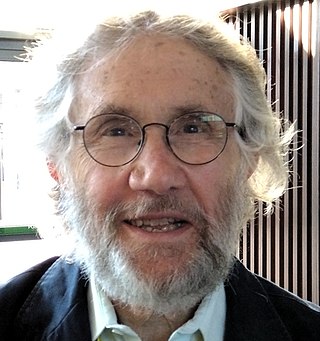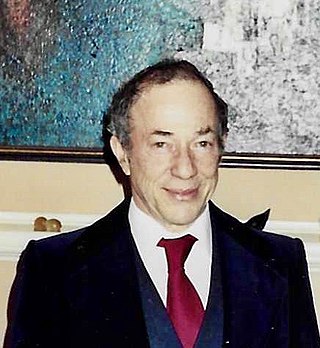Related Research Articles

Ralph Hartzler Fox was an American mathematician. As a professor at Princeton University, he taught and advised many of the contributors to the Golden Age of differential topology, and he played an important role in the modernization of knot theory and of bringing it into the mainstream.

Irving Kaplansky was a mathematician, college professor, author, and amateur musician.
Lipman Bers was a Latvian-American mathematician, born in Riga, who created the theory of pseudoanalytic functions and worked on Riemann surfaces and Kleinian groups. He was also known for his work in human rights activism.
Eliezer 'Leon' Ehrenpreis was a mathematician at Temple University who proved the Malgrange–Ehrenpreis theorem, the fundamental theorem about differential operators with constant coefficients. He previously held tenured positions at Yeshiva University and at the Courant Institute at New York University.

John Colin Stillwell is an Australian mathematician on the faculties of the University of San Francisco and Monash University.

Richard Anthony Brualdi is a professor emeritus of combinatorial mathematics at the University of Wisconsin–Madison.

Sigurdur Helgason was an Icelandic mathematician whose research has been devoted to the geometry and analysis on symmetric spaces. In particular, he used new integral geometric methods to establish fundamental existence theorems for differential equations on symmetric spaces as well as some new results on the representations of their isometry groups. He also introduced a Fourier transform on these spaces and proved the principal theorems for this transform, the inversion formula, the Plancherel theorem and the analog of the Paley–Wiener theorem.

Edward James McShane was an American mathematician noted for his advancements of the calculus of variations, integration theory, stochastic calculus, and exterior ballistics. His name is associated with the McShane–Whitney extension theorem and McShane integral. McShane was professor of mathematics at the University of Virginia, president of the American Mathematical Society, president of the Mathematical Association of America, a member of the National Science Board and a member of both the National Academy of Sciences and the American Philosophical Society.

Irwin Kra is an American mathematician, who works on the function theory in complex analysis.

Carl Samuel Herz was an American-Canadian mathematician, specializing in harmonic analysis. His name is attached to the Herz–Schur multiplier. He held professorships at Cornell University and McGill University, where he was Peter Redpath Professor of Mathematics at the time of his death.
Alexander Doniphan Wallace was an American mathematician who introduced proximity spaces.
Jane Smiley Cronin Scanlon was an American mathematician and an emeritus professor of mathematics at Rutgers University. Her research concerned partial differential equations and mathematical biology.
Clifford John Earle, Jr. was an American mathematician who specialized in complex variables and Teichmüller spaces.
Halsey Lawrence Royden, Jr. was an American mathematician, specializing in complex analysis on Riemann surfaces, several complex variables, and complex differential geometry. Royden is the author of a popular textbook on real analysis.
Ravindra Shripad Kulkarni is an Indian mathematician, specializing in differential geometry. He is known for the Kulkarni–Nomizu product.
David Drasin is an American mathematician, specializing in function theory.
David Kent Harrison was an American mathematician, specializing in algebra, particularly homological algebra and valuation theory.
Robert McDowell Thrall (1914–2006) was an American mathematician and a pioneer of operations research.
Albert "Tommy" Wilansky was a Canadian-American mathematician, known for introducing Smith numbers.
James Allister Jenkins was a Canadian–American mathematician, specializing in complex analysis.